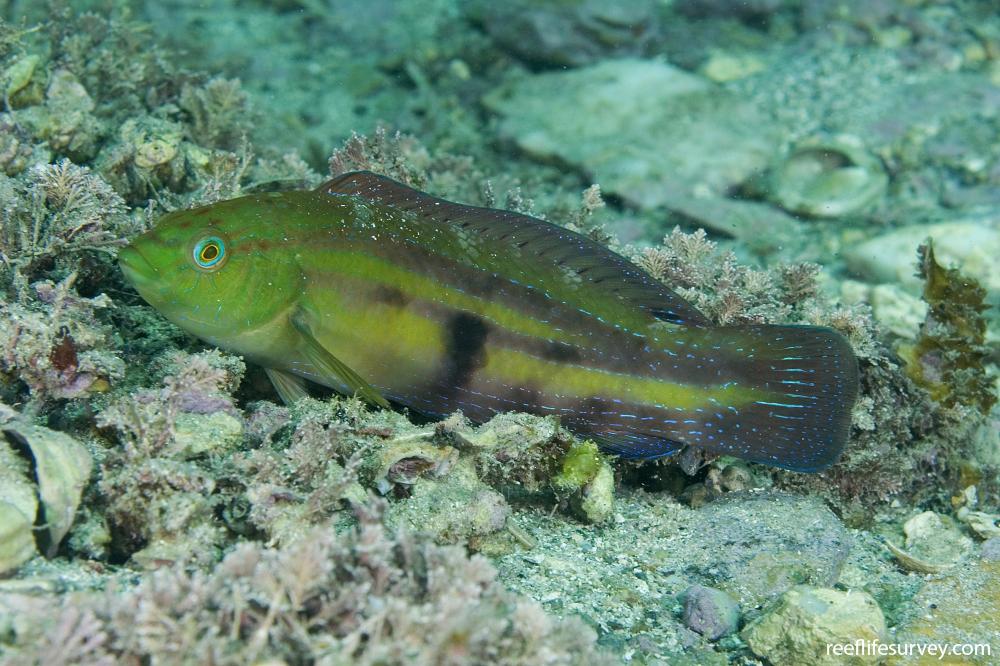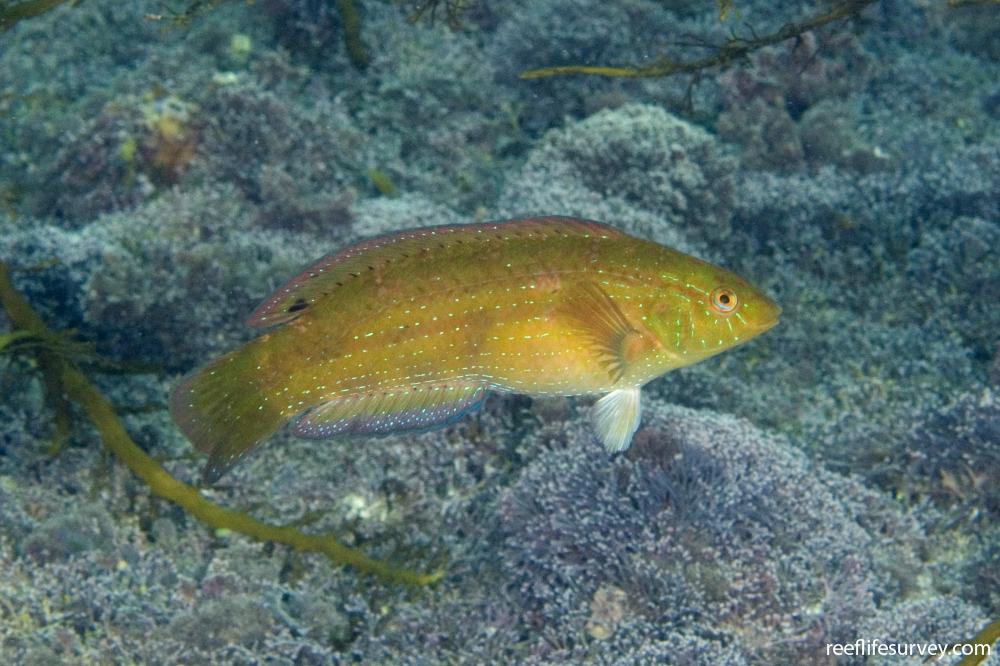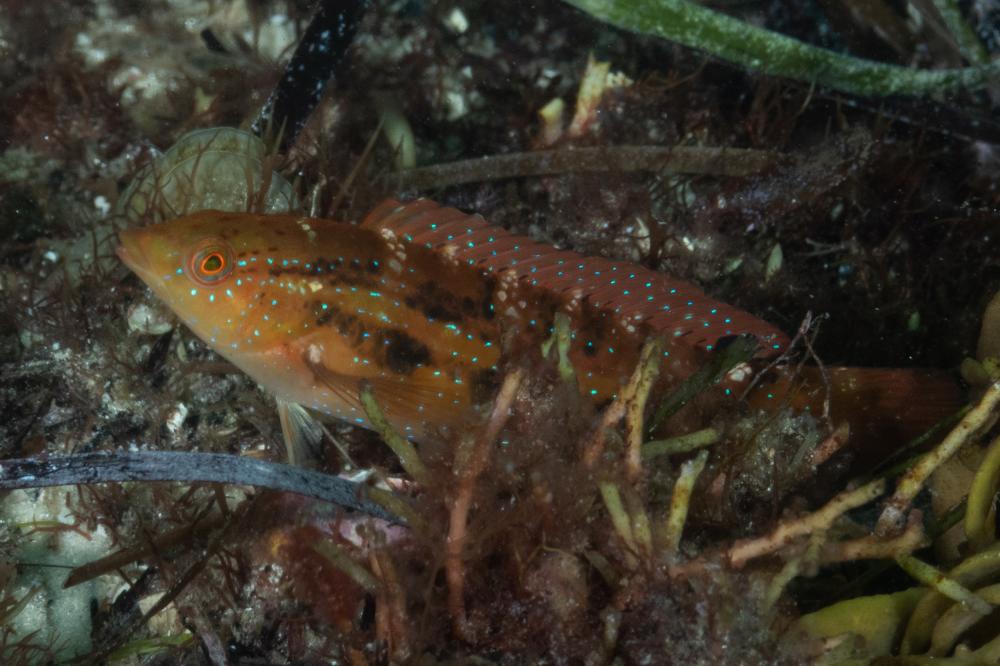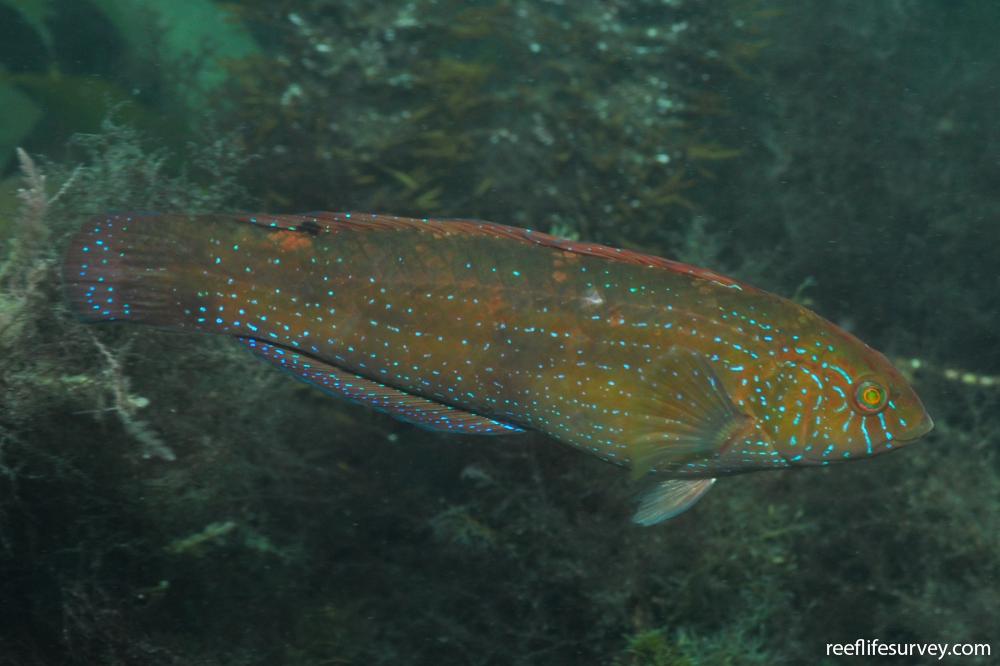Pictilabrus laticlavius
Senator wrasseSimilar Species
Same Genus
Distribution
Temperate Australasia
Description
Males easily recognised by bright green colour, distinctive body pattern and their curiosity towards divers. Females and juveniles are among the least well recognised and most often misidentified species on southern Australian reefs. Males have a green background colour with violet stripes along the sides, whereas the females and juveniles are a reddish colour. The most distinctive features other than the long body shape, rounded tail and wide tail base are the rows of very small bright green spots along the body and tail (which are more obvious when seen under artificial light), and the black spot on the base of the dorsal fin at the rear end. This black spot is hidden when the dorsal fin is not extended, and is on the fin, rather than the body, unlike similar small wrasses in the area which have a black patch on the top of the tail base (e.g. Pseudolabrus mortonii).
Information
Max Size: 23 cm
Sea Temperature Range: 10.8-23.2°C
Depth: 0-30m
Habitat Generalization Index: 27.05
Also referred to as the SGI (Species Generalisation Index), this describes the habitat niche breadth of the species. Species with values less than 15 are found in a relatively narrow range of reef habitat types (specialists), while those over 25 may be found on most hard substrates within their range (generalists). Learn more here.
Conservation and Rarity
IUCN Status: Least Concern
Occurrence: Widespread (68.6% of sites)
Occurrence describes how often the species is found on surveys within its distribution. It is calculated as the % of reef sites surveyed by RLS divers across all the ecoregions in which the species has been observed
Abundance: Few (2 per transect)
Abundance is calculated as the average number of individuals recorded per RLS transect, where present.
Edit by: GJ Edgar. 2008. Australian Marine Life. New Holland, Sydney























